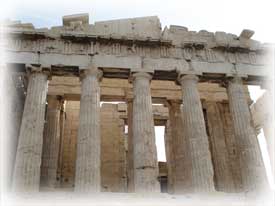Soil held spiritual significance for ancient Greeks
 Washington, Oct 8 : A new research has suggested that the soil under the ancient Greek buildings like temples, which honored specific gods and goddesses, held spiritual significance.
Washington, Oct 8 : A new research has suggested that the soil under the ancient Greek buildings like temples, which honored specific gods and goddesses, held spiritual significance.
According to a report in Discovery News, the finding could help explain why writers like Homer and Plato wrote of “divine soil” and soil that can affect a person’s soul. It may also explain how the ancients selected locations for their sacred buildings.
“Temple sites were chosen to honor the personality and aspirations of gods and goddesses, which, in turn, were shaped by the economic basis for their cults,” author Gregory Retallack told Discovery News.
Retallack, a professor of geological sciences at the University of Oregon, took soil samples from 84 Greek temple sites dating to the Classical Age from 480 to 338 B. C.
Based on analysis of each sample, he created a profile for the soils naming their characteristics and how they might have been used at the time.
Retallack noticed a pattern: The soil appeared to be directly connected to the mythology surrounding the god or goddess honored by the particular temple.
Buildings dedicated to Athena and Zeus, for example, were erected on soils of citadels.
“These are the god and goddess of warrior societies, and their temples are mostly on or near easily defensible hills, with evidence of long prior occupation,” he explained.
Temples dedicated to Artemis and Apollo, associated with hunting, were located on likely former hunting grounds.
Hera and Hermes buildings sat atop clay-rich soil that would have been suitable for cattle grazing, in keeping with “Hermes the ram-bearer” and “ox-eyed queen Hera.”
The sanctuaries of Demeter and Dionysus, on the other hand, were found on fertile soils suitable for mixed farming. According to Greek mythology, both of these deities were linked to this activity, with grain cultivation festivals held in their honor.
Larger estate farmlands appear to have been more closely associated with Hestia, Hephaestos and Ares.
Temples erected in honor of Poseidon and Aphrodite, both linked in myth and iconography to the sea, were built on arid soils near fishing harbors.
According to Richard Feather Anderson, director of the American School of Geomancy, he had never before heard of the soil-temple link, but that it made sense, given the ancients’ desire “to put buildings and other things in their rightful place.” (ANI)